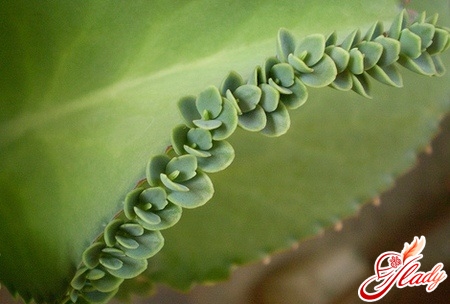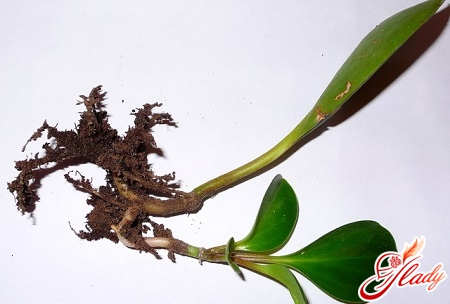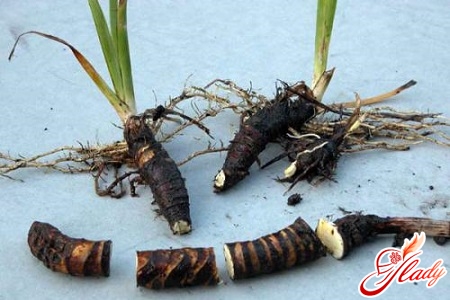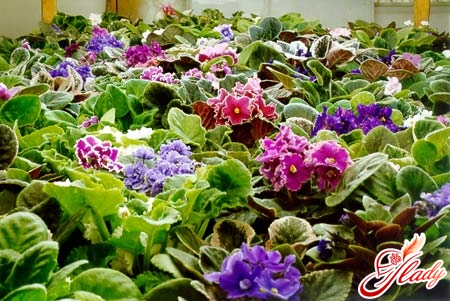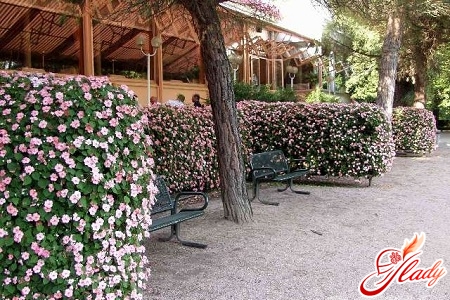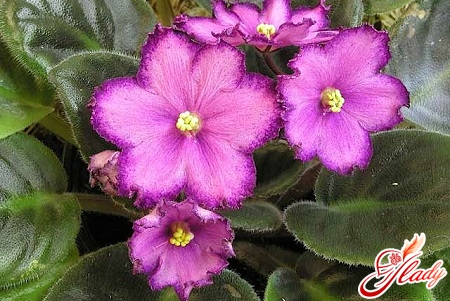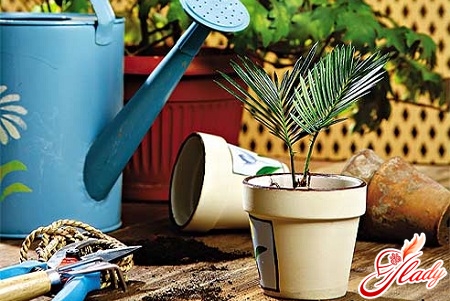 Plants in nature develop freely andtake up the space they need. Indoor flowers are limited by the size of the pot. As they grow, their roots eventually entwine the entire soil lump. Because of this, the flower becomes “cramped” in the pot. It lacks not only space, but also nutrients. Replanting indoor plants helps get rid of all these problems.
Plants in nature develop freely andtake up the space they need. Indoor flowers are limited by the size of the pot. As they grow, their roots eventually entwine the entire soil lump. Because of this, the flower becomes “cramped” in the pot. It lacks not only space, but also nutrients. Replanting indoor plants helps get rid of all these problems.
When should indoor plants be transplanted?
The time intervals at which it is necessaryreplanting plants depends on their growth rate. It can vary greatly among different houseplants. For example, Kalanchoe, myrtle or small-leaved ficus grow slowly. Therefore, they need to be replanted every two to three years. Chlorophytums, philodendrons, and sparmannias have a normal growth rate and should be replanted annually. For lovers of indoor flora, we recommend keeping a special notebook in which you need to write down the dates of replanting each plant. These notes can be very useful to you in the future. Usually, plants are replanted in the spring. This is done immediately before growth activation, that is, in March-April. But there is no need to strictly adhere to such a recommendation, since the root system of fast-growing indoor flowers also develops quickly. In this case, there is no need to wait for spring. Create comfortable conditions for indoor flowers and replant them when they need it. Often, you can already determine by the appearance of a houseplant that it needs to be replanted. The first signs of this are the absence of new shoots and flowering, the earthen lump sticking out of the pot, and yellowing of the leaves. Even if you do not see external signs on your flowers, you should still make sure that they do not need to be replanted this spring. To do this, take the flower out of the pot together with the soil and examine it. If the earthen lump is heavily entwined with roots, this means that your plant is already “cramped” in the old flowerpot. Replanting plants of different species has its own specifics. Bulbous indoor plants need to be replanted after the leaves turn yellow, and flowering plants - after the end of the flowering period. Young herbaceous and decorative foliage plants should be replanted annually, and large and adult tub plants do not need to be “disturbed” so often. Camellias, noble laurel, palms should be replanted every four to five years, since frequent changes of pots do not have a very good effect on their growth.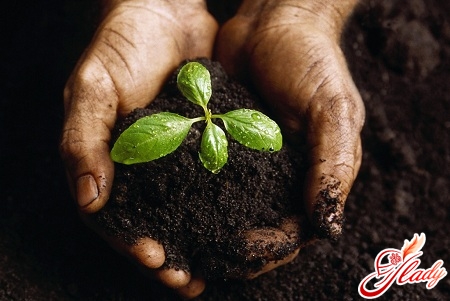
Transplant rules
The size of the pot you will be replanting intoцветок, должны быть больше на два-четыре сантиметра в диаметре, чем предыдущий. Для растений с загнившей или слаборазвитой корневой системой берут посуду прежних размеров. А если вам пришлось обрезать больные корни, то стоит взять вазон даже меньшего размера. Новую посуду перед посадкой оставьте в воде на 10-12 часов, а старые тщательно обмойте от загрязнений и плесени, обеззаразьте. Благодаря этому можно избавиться от солевого налета, а также от возбудителей болезней и спор различных грибов. Пересадка растений требует соблюдения некоторых правил. Для того чтобы вынуть цветок из горшка, полейте его заблаговременно, а затем аккуратно достаньте его из вазона вместе с земляным комом. Если он плохо выходит из глиняного горшка, разбейте вазон, чтобы не повредить корни. Пластиковый горшок в этом случае можно просто разрезать. После этого земляной ком следует очистить от мочковатых мелких корней. Для этого секатором срежьте сеть мелких корешков, а получившиеся порезы присыпьте угольным порошком. Толстые, основные корни, не трогайте. Их обрезают только в случае загнивания. Затем аккуратно снимите верхний слой земли и с помощью колышка уберите землю по бокам кома. Полностью избавляться от всей старой земли не следует: этим можно повредить корни. Новый горшок для пересадки растения необходимо предварительно подготовить. На водоотводящие отверстия положите кусочек черепка выпуклой стороной вверх. Затем насыпьте дренажный слой, в качестве которого можно использовать крупнозернистый песок, мелкие кусочки пенопласта, керамзит, древесный уголь или просто гальку. Имейте в виду, что хороший дренаж растениям просто необходим. Его высота для мелкой посуды должна быть один сантиметр и три-пять – для крупных вазонов. В качестве земляной смеси при пересадке используют ту, которая необходима для выращивания конкретного растения. Подготовленный грунт насыпьте холмиком на дренаж, после чего поставьте растение в горшок. Земляной холм нужно сделать таким, чтобы корневая шейка была ниже на 2-3 сантиметра, чем край горшка. Затем, придерживая растение, подсыпьте по бокам землю в горшок и уплотните ее. От плотности грунта напрямую зависит дальнейший рост растения и его цветение. Плотная почва способствует цветению, а более рыхлая – лучшему росту. При пересадке растений почву следует плотно утрамбовать. Затем опрыскайте цветок, хорошенько его полейте и поставьте в затененное место. Примерно через четверть часа слейте воду из поддона. Следует добавить, что вода, предназначенная для полива, должна быть теплее комнатной температуры на 1-2° С. После пересадки никогда не ставьте растение на солнце. Удобрять его в этот момент тоже нельзя. Пересаживая цветок, даже если вы делаете простую перевалку, корневые волоски всегда повреждаются. А на их восстановление растению необходимо около двух недель. Старые, основные корни, служат лишь для транспортировки питательных веществ и воды к стеблям и листьям, но не принимают в их добывании никакого участия. Вода и питательные вещества впитываются хрупкими и тонкими корневыми волосками. При их повреждении во время пересадки, цветок на некоторое время теряет возможность нормально усваивать необходимые микроэлементы. Поэтому удобрение, которое вы внесете в этот период, может обжечь отрастающие корневые волоски. Это очень плохо сказывается на состоянии растения, и оно начинает «болеть». Свежая земля к тому же содержит необходимое количество питательных веществ. При внесении удобрений в этот период возникает их избыток, что может испортить почву и повредить корни. Поэтому после пересадки растений их не удобряют в течение двух месяцев. «Переселять» ваших зеленых питомцев лучше всего ранним вечером: солнце уже не обжигает своими лучами, но еще и не село. Самое неблагоприятное время – полдень. 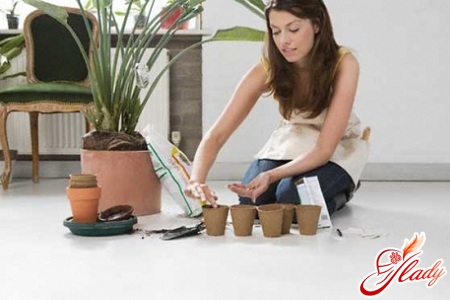
Handling of indoor plants
Transplantation of indoor plants can be doneby transshipment. During this, only the pot is changed, and the root ball is not touched. This is necessary to increase the volume of the soil. Most beautifully flowering plants require multiple transshipments. For example, gloxinia and cyclamen are transshipped twice from sowing to the beginning of flowering, and hybrid cineraria - three times. Transshipment is good because the growth of flowers does not stop during this process. This makes it possible to get well-developed, strong specimens. If you see that the roots are strongly intertwined and have created a dense tangle, then you will need to make lateral cuts along the root ball. This procedure promotes better formation of lateral roots. If this is not done, the root ball may stop developing and even rot. No matter how scary this procedure may seem at first glance, it is simply necessary for an overgrown root system.
Plant transplantation and the lunar calendar
Plant growth, their energy, resistance tounfavorable factors and fruiting change depending on the phases of the Earth's night satellite, taking into account which the lunar calendar is compiled. The new moon is not a good time to carry out any work related to plants, except for spraying and watering. It is believed that indoor flowers during this period lose the strength necessary for their development. During the first and second phases of the Moon, the energy of flowers is directed to development and intensive growth. At this time, it is not recommended to trim plants, as this can delay the process of "wound healing". Many amateur gardeners know that replanting indoor plants according to the lunar calendar contributes to their active growth. At the same time, indoor flowers should not be replanted during the period when the Moon passes the constellation Virgo. And plants transplanted during the full moon and during the young moon take root well. But you should not do this when the Moon is "visiting" Aquarius. Replanting plants is also unfavorable during the waning moon. Without a doubt, the lunar calendar will help you achieve good results when replanting indoor plants with minimal effort and money. We recommend reading:




